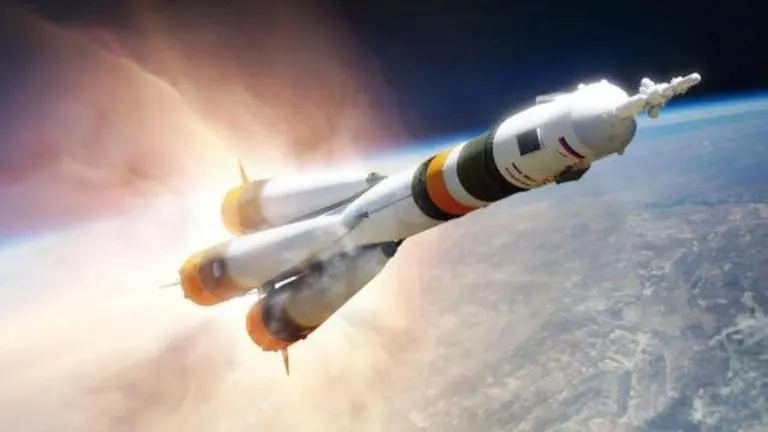Updated 14 October 2020 at 20:05 IST
Soyuz MS-17 docks at ISS; NASA astronaut Kate Rubins will be a part of space history
Soyuz MS-17 spacecraft has successfully docked with the Internation Space Station. NASA astronaut Kate Rubins has entered the space for the 2nd time. Read more.
- Science News
- 3 min read

After a long wait of 4 years, NASA astronaut Kate Rubins has returned to the International Space Station today that is October 14. In Expedition 64, astronaut Rubins and two Russian cosmonauts, Sergey Ryzhikov and Sergey Kud-Sverchkov reached the space station in Russia's Soyuz MS-17 spacecraft. Soon after her arrival at the station, Rubins will welcome a SpaceX crew aboard and celebrate space station history.
NASA astronaut, Kate Rubins' 2nd time on ISS
According to NASA, Soyuz MS-17 spacecraft was successfully able to dock with ISS at 4:48 a.m. EDT (2:18 PM IST). The NASA astronaut and the two Russian cosmonauts have joined Expedition 63 Commander Chris Cassidy of NASA and Roscosmos cosmonauts Anatoly Ivanishin and Ivan Vagner, who have been aboard the complex since April.
From Wednesday, October 21, cosmonaut Ryzhikov will become the commander when Expedition 64 begins. The same date also marks the departure of the current commander Cassidy and fellow crew Vagner and Ivanishin. NASA's official website also reveals that the change of command ceremony will also take place on Tuesday, October 20 with all crew members at 4:15 PM EDT (1:45 AM IST).
Advertisement
Nevertheless, viewers will be able to witness the ceremony as it will air live on NASA Television and the agency’s website. On the other hand, Kate Rubins and other crew will be a part of space history as ISS approaches the 20th anniversary of continuous human presence in space
Also Read | NASA's rules for Artemis Accords include safe disposal of orbital debris and transparency
Advertisement
Apart from this, the Expedition 64 crew will live and work aboard the outpost for six months. NASA astronaut has been to ISS before in 2016 and Ryzhikov is also visiting the space laboratory for the second time. However, Kud-Sverchkov is going to space for the first time. The team of three will be responsible for conducting research in technology development, Earth science, biology, human research and more.
More about NASA astronaut Kate Rubins
According to a report by NASA, astronaut Kate Rubins is the first person to sequence DNA in space. She holds bachelor’s degree in molecular biology from the University of California, San Diego, and a doctorate in cancer biology from Stanford University’s Medical School Biochemistry Department and Microbiology and Immunology Department, Palo Alto, California. The NASA astronaut has been to space before in 2016.
NASA's Crew-1 mission
Apart from this, the during Expedition 64, the crew onboard will grow from three to seven as four more members are going to join the team in NASA's Crew-1 mission aboard the SpaceX Crew Dragon. The Crew-1 mission with SpaceX is going to be the first operational commercial mission to the space station which enable NASA to regularly launch humans from America. According to NASA's official blog, Crew-1 is currently targeted for launch in November.
ISS to complete its 20th anniversary of continuous human presence
Moreover, the International Space Station is approaching its 20th anniversary of continuous human presence in space. The Space Agency has been successfully sending astronauts outside Earth's atmosphere to continue testing technologies, perform science and develop the skills needed to explore farther from Earth aboard the orbiting laboratory.
As per the report, 241 people from 19 countries have visited the unique microgravity destination that has hosted more than 3,000 research and educational investigations from researchers in 108 countries and areas.
All Images/ Promo Image ~ NASA
Published By : Yash Tripathi
Published On: 14 October 2020 at 20:05 IST



